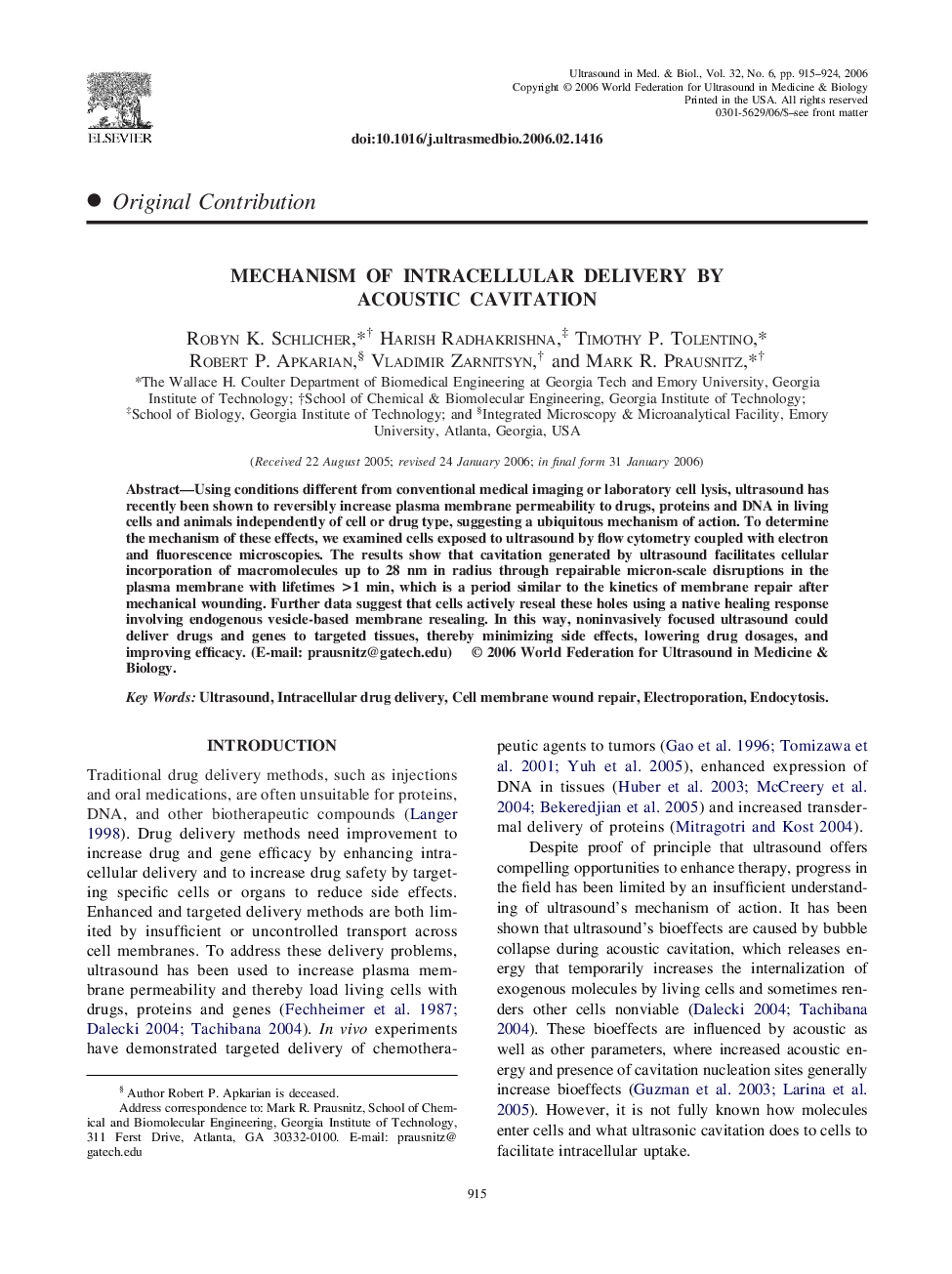| Article ID | Journal | Published Year | Pages | File Type |
|---|---|---|---|---|
| 1762998 | Ultrasound in Medicine & Biology | 2006 | 10 Pages |
Abstract
Using conditions different from conventional medical imaging or laboratory cell lysis, ultrasound has recently been shown to reversibly increase plasma membrane permeability to drugs, proteins and DNA in living cells and animals independently of cell or drug type, suggesting a ubiquitous mechanism of action. To determine the mechanism of these effects, we examined cells exposed to ultrasound by flow cytometry coupled with electron and fluorescence microscopies. The results show that cavitation generated by ultrasound facilitates cellular incorporation of macromolecules up to 28 nm in radius through repairable micron-scale disruptions in the plasma membrane with lifetimes >1 min, which is a period similar to the kinetics of membrane repair after mechanical wounding. Further data suggest that cells actively reseal these holes using a native healing response involving endogenous vesicle-based membrane resealing. In this way, noninvasively focused ultrasound could deliver drugs and genes to targeted tissues, thereby minimizing side effects, lowering drug dosages, and improving efficacy. (E-mail: prausnitz@gatech.edu)
Related Topics
Physical Sciences and Engineering
Physics and Astronomy
Acoustics and Ultrasonics
Authors
Robyn K. Schlicher, Harish Radhakrishna, Timothy P. Tolentino, Robert P. Apkarian, Vladimir Zarnitsyn, Mark R. Prausnitz,
